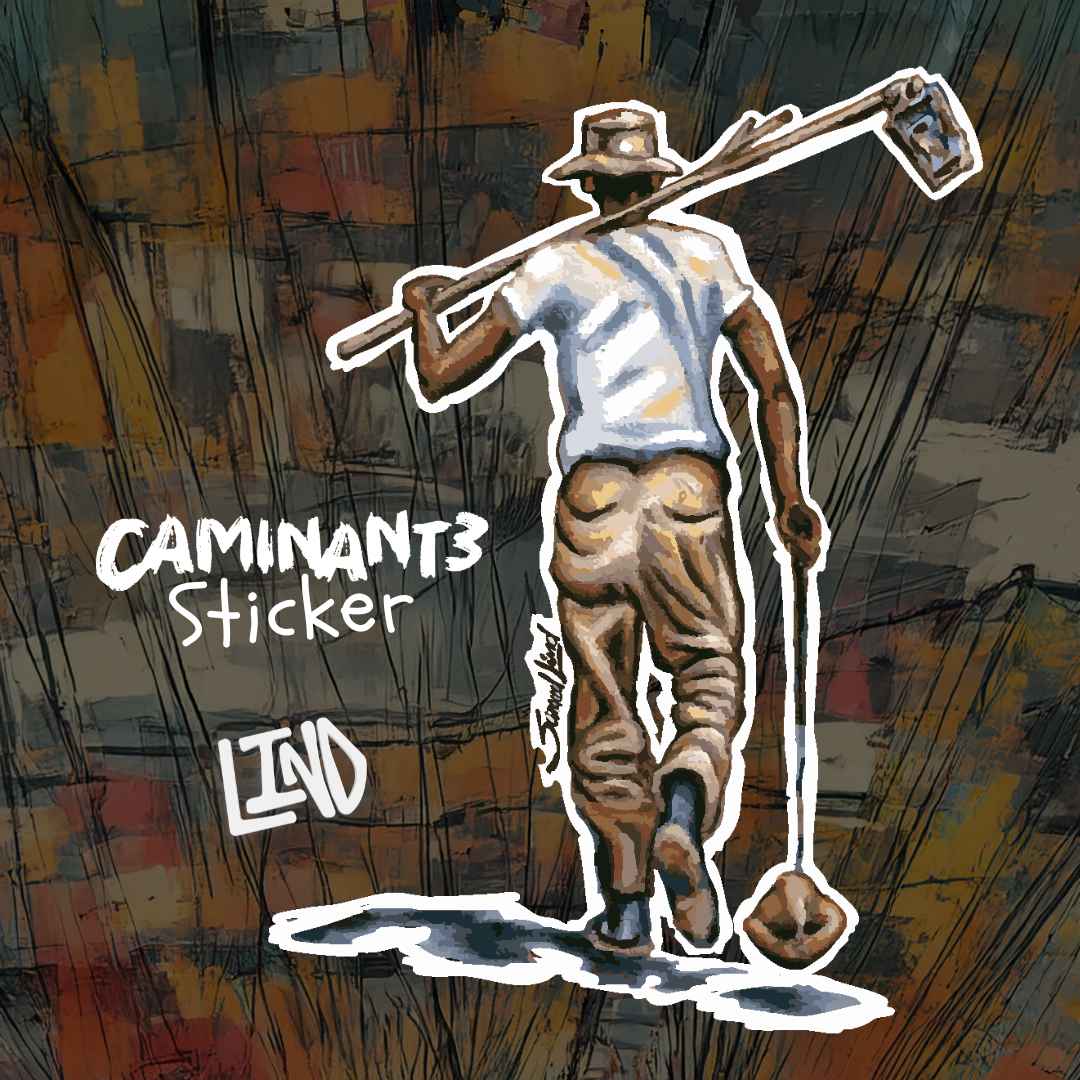The most iconic figure of Loíza's festivals, the Vejigante is a colorful, horned mask character that embodies a fusion of Spanish and African influences. Historically, the Vejigante represented the defeated Moors in the battle against Santiago Apóstol (Saint James). However, in Loíza, this character has been reclaimed and transformed into a symbol of Afro-Boricua pride, resilience, and cultural resistance. In his art, Samuel Lind often portrays the Vejigante as a powerful protector of nature and the community's heritage. This sticker captures the dynamic and festive energy of the Vejigante, a central and unmissable part of the celebration.
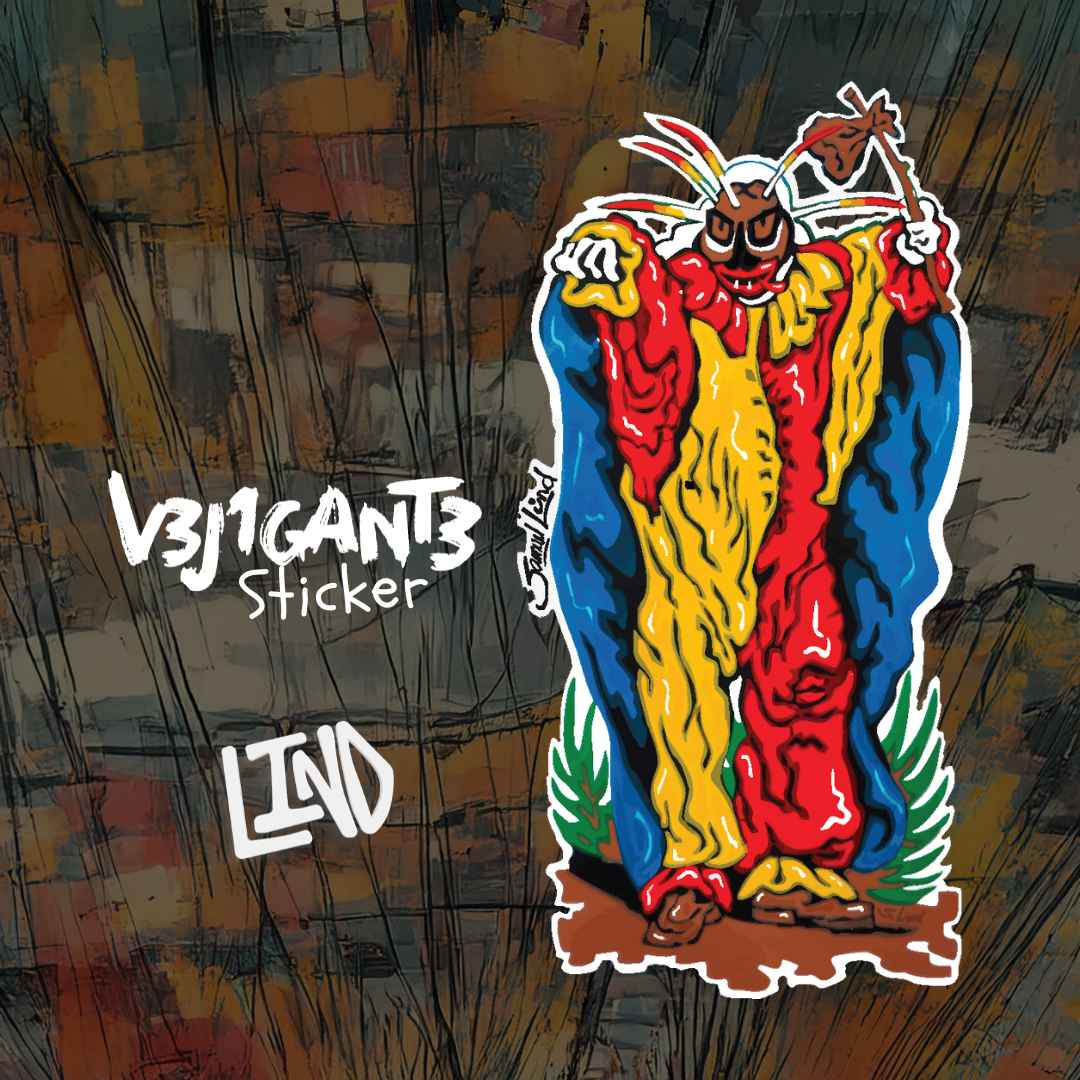
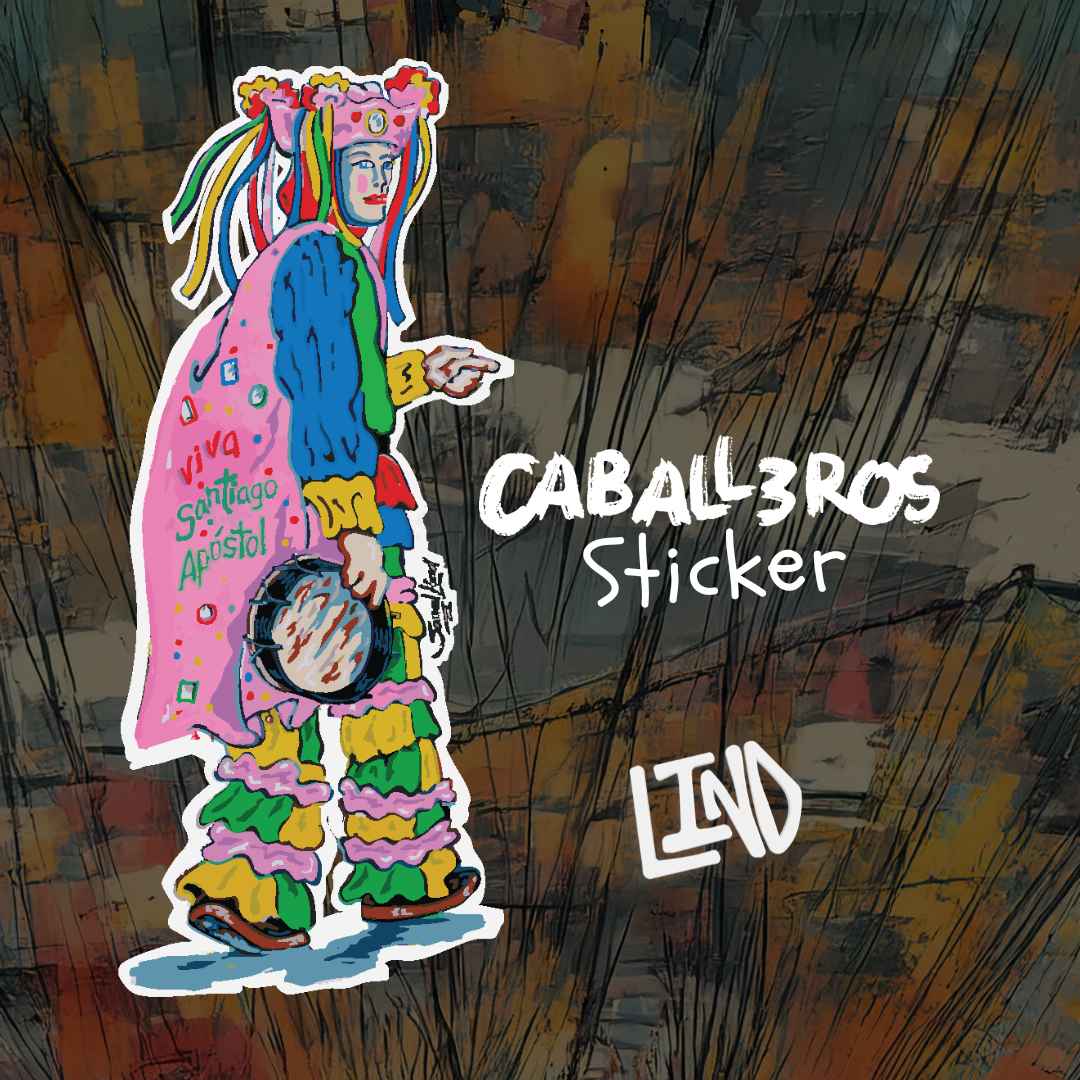
Representing the Spanish knights, this figure is a key element of the Fiestas de Santiago Apóstol. In Loíza, they take on an even deeper meaning, as they represent Saint James the Apostle himself and are affectionately known by the people as "las mascaritas de Santiago" (the little masks of Saint James).Their elaborate, colorful costumes and wire-mesh masks contrast with the more organic forms of the Vejigante, symbolizing the historic battle between good and evil. The Caballeros are a living reminder of the festival's deep Spanish roots and the complex history that has shaped Loíza's identity. Lind's depiction in this sticker honors this traditional figure with vibrant colors and a profound sense of historical and spiritual importance.
The "Tambor" (Drum) is the heart of Bomba and the pulse of Loíza. Specifically, the "barril de bomba," traditionally made from rum barrels with goatskin heads, is the central instrument. The drum is not just an instrument but a sacred object with deep roots in African heritage, a conduit for spiritual expression and communal connection. In his art, Lind often depicts the Tambor with anthropomorphic features, suggesting that the drum itself is alive with the spirit of his ancestors. This sticker captures the primal and sacred power of the drum, the instrument that calls the community together to dance, celebrate, and remember.
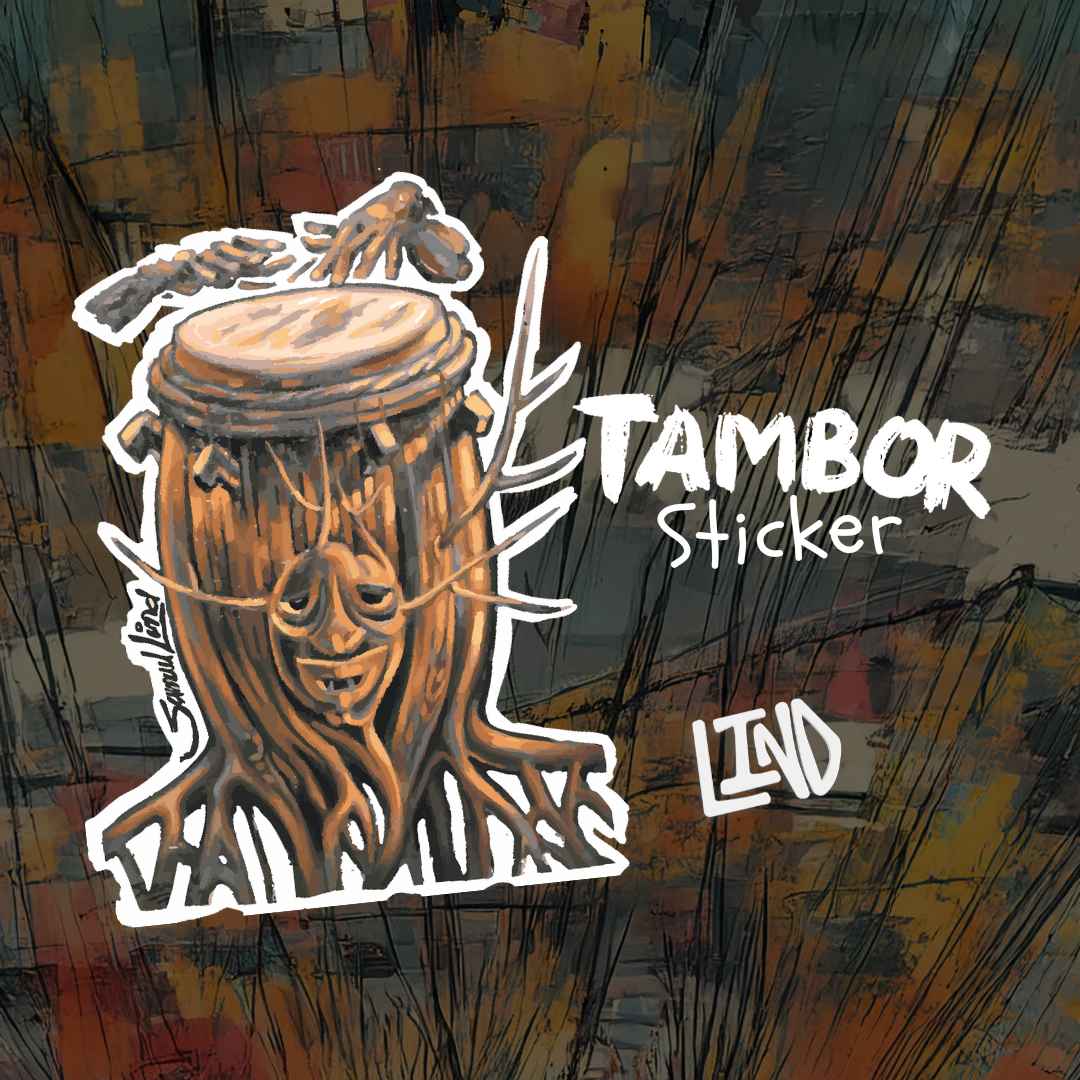
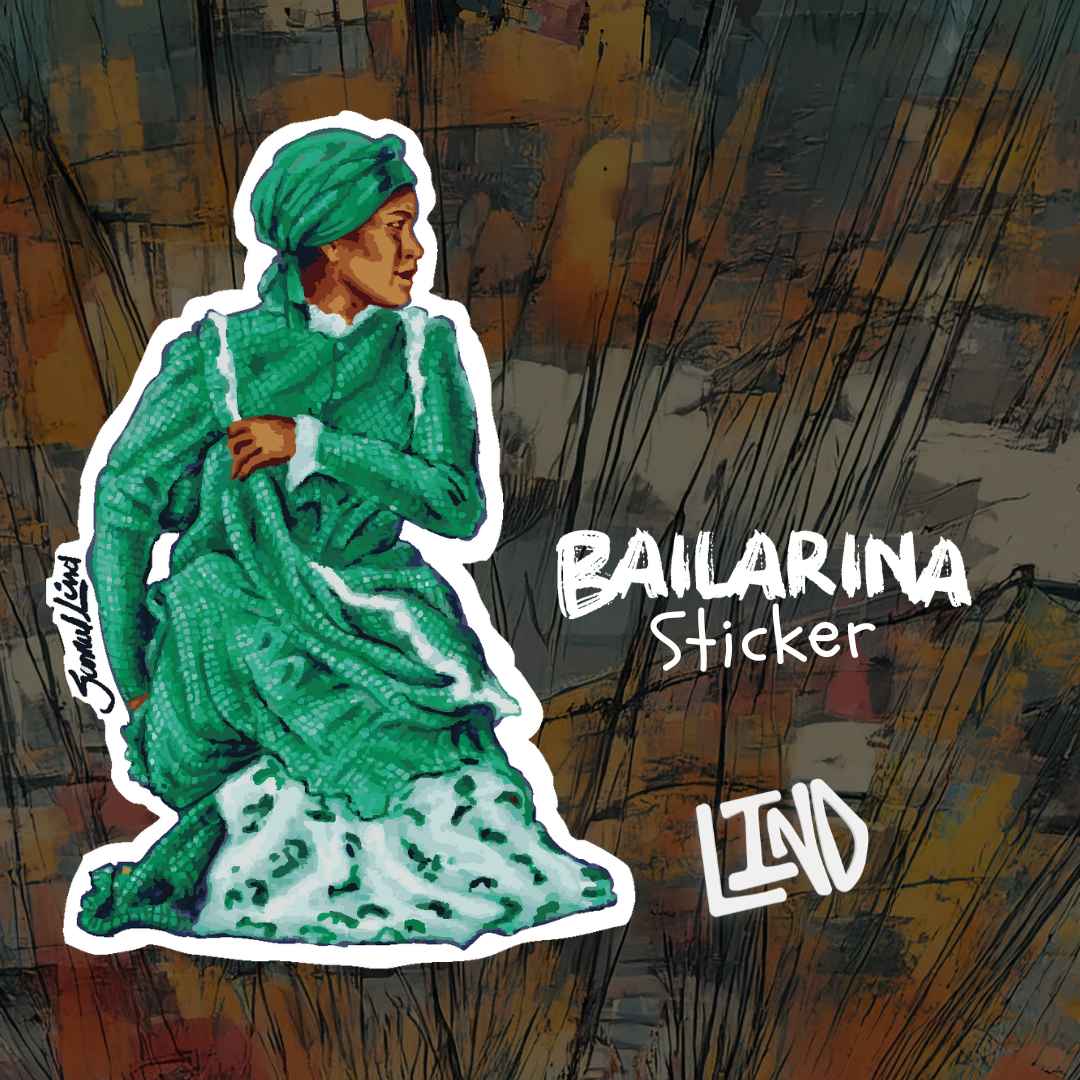
The "Bailarina" (Dancer) is a tribute to the art of Bomba, the traditional Afro-Puerto Rican music and dance that is the soul of Loíza's cultural expression. Bomba is more than a performance; it is a dialogue between the dancer and the drummer, a powerful form of communication and emotional release that originated on the sugar plantations. The dancer's movements dictate the rhythm, making each performance a unique and improvised conversation. Samuel Lind frequently captures the grace, passion, and strength of the Bomba dancer in his work, celebrating a living tradition that has been passed down through generations.
The "Caminante" (The Walker) is a figure that often appears in Samuel Lind's work, symbolizing the journey, perseverance, and connection to the land of the Puerto Rican people. In an interview, Lind explained that a painting of his uncle as a "caminante" is one of his most personal and cherished pieces. This character represents the hardworking people of Loíza—the farmers, the fishermen, and all those whose lives are intertwined with the natural surroundings. This sticker is a tribute to the quiet dignity and enduring spirit of the Loiceño people.
